#Jewish pioneers
Explore tagged Tumblr posts
Text
Regarding Mina's description of Dracula and why it's problematic, a good starting point would be to read the Wikipedia article for physiognomy, which is the outdated pseudoscience of face reading that is unfortunately rooted in racism, antisemitism, ableism, etc., and was very popular during the Victorian era as a way to judge moral character based on facial features.
So when Mina says 'His face was not a good face', she is not just saying that Dracula is ugly (though concepts of ugliness and beauty are not value-neutral either), but that she can tell that he is evil based on his facial features; note that one of the facial features she singles out is a 'beaky nose', which comes from Cesare Lombroso's idea that among other traits, hawk-like noses are a marker of criminality on the basis of criminals being evolutionary throwbacks who are less evolved than non-criminals; many of these allegedly 'criminal' and 'degenerate' facial features are obviously racialized and not associated with Gentile whiteness, but in opposition to it.
Stoker was definitely interested in physiognomy and uses it as a narrative device to show how certain heroic characters are intelligent, perceptive, and educated on the latest (pseudo)sciences (the modernity theme again) - namely Mina and Van Helsing, but also Jonathan to a lesser degree; we will definitely see this idea come up several more times, including explicit references to Lombroso himself.
It is also important to remember that linking physical appearance and morality still happens today - think about how many people say they can tell someone is a bad person bc they're ugly or that 'People get the face they deserve' where good people age gracefully and bad people age poorly, even though aging has nothing to do with personal character.
#dracula#dracula daily#re: dracula#mina harker#mina murray#abraham van helsing#van helsing#the sad irony with lombroso is that he himself was jewish#yet pioneered a theory of criminality that encouraged bigotry against his own marginalized ethnic group#which is also why it's frustrating when people dismiss mina's bigotry by saying she's an autistic-coded woman and would never#marginalized people can still internalize prejudices that hurt themselves and others#and she is ultimately a narrative device written by a bigoted writer not a real person herself
780 notes
·
View notes
Text

A group of zionist pioneers who escaped to Spain during World War Two meeting in Barcelona, date unknown. From Jewish Youth in Transit: Self-Image and Ideas in times of Change. More information on the group and some of its members can be found here .
#history#ww2#holocaust#jewish#Zionism#jewish history#Spain#Barcelona#europe#european history#black and white#pioneer#refugees
4 notes
·
View notes
Text
WASHINGTON — Adam Schiff, the freshman Democratic senator from California, is being sworn into office on a 1490 edition of Maimonides’ Mishneh Torah, one of the most revered and prominent codes of Jewish law.
Schiff, in a statement ahead of his swearing in on Monday, said the edition, published in the duchy of Milan, now in northern Italy, was “a monumental legal code and one of the most organized, comprehensive, and influential works of Jewish law.”
The edition was published by Gershom ben Mosheh ish Sontsino, a scion of a pioneering Jewish printing family known as Soncino. A publishing house in the family’s name is still active.
A spokeswoman for Schiff, until this week a U.S. Representative and a former federal prosecutor, said he chose the volume, held by the Library of Congress, in part because of his concerns about the state of the rule of law as President-elect Donald Trump returns to office.
Schiff led one of Trump’s impeachments in the president’s first term and co-chaired the congressional investigation into the deadly Jan. 6, 2021 U.S. Capitol riot, which was spurred by Trump’s false claims he won that election. Trump, who has promised “retribution” against his perceived enemies, said this week Schiff should be jailed.
The spokeswoman said that Schiff was also attracted to the volume because of his intellectual curiosity. “It’s simply his nerdy interest in how old this volume is and how comprehensive it is,” she said.
Maimonides, also known as Rambam and considered one of history’s preeminent Jewish scholars, wrote the Mishnah Torah in the 12th century as an all-inclusive guide to the system of Jewish law. Written in Hebrew and divided into 14 volumes, it is a fixture of Jewish houses of study and other educational institutions.
Schiff is not the only Jewish elected official who in recent years chose to be sworn into office on volumes that reflect why they got into politics. Pennsylvania Gov. Josh Shapiro, a Democrat, in 2023 was sworn in on a stack of three Hebrew Bibles, including the one that was on the bimah when a gunman massacred 11 Jewish worshipers in a Pittsburgh synagogue in 2018.
Georgia Sen. Jon Ossoff, a Democrat, in 2021 was sworn in on a book of Hebrew scripture once owned by an Atlanta rabbi whose synagogue building was bombed by white supremacists in 1958.
664 notes
·
View notes
Text
to whoever needs to hear this: transvestite and transsexual are not slurs. "outdated" queer terms are not inherently slurs. these are literally historically the first 2 terms created and used to talk about the trans community, both coined the first doctor to perform successful trans sex reassignment surgeries, who spent the rest of his career pioneering and paving the way for the modern surgeries we perform today. his name was Magnus Hirschfeld, he was a jewish doctor who began a lifetime of fighting for queer rights due to being moved by the struggles his queer patients went through in terms of not being allowed to accept themselves during the Nazi regime at the time. these are perfectly fine terms that have grown to develop their own distinct meanings and communities over time. this man spent his life fighting for trans and jewish rights during Nazi occupation. any queer term can be used as a slur in the wrong hands. thank you
#trans#transgender#lgbtqia#lgbtq#lgbt#queer#transsexual#transvestite#trans man#trans men#trans woman#trans women#transfem#transfemme#transfeminine#transmasculine#transmasc#ftm#mtf#genderqueer#nonbinary#non binary#genderfluid#our writing#queer history#magnus hirschfeld#queer terminology#queer terms#trans terms#trans terminology
2K notes
·
View notes
Text
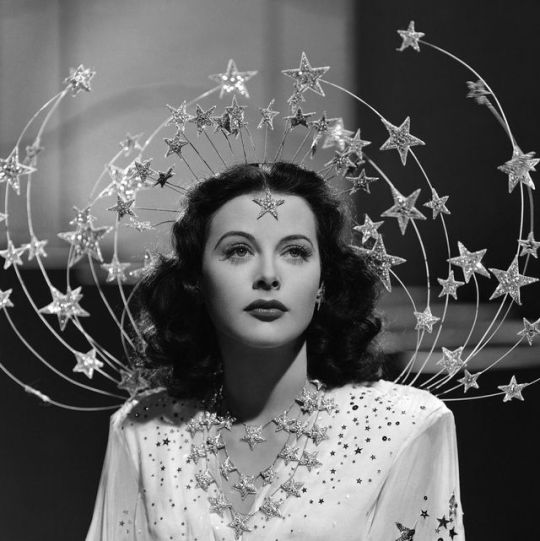

Propaganda
Hedy Lamarr (Samson and Delilah, Ziegfeld Girl)—Look. I'm sure someone has already submitted Hedy Lamarr because she was spectacularly beautiful, and a very strong lady too: she fled both an abusive marriage AND nazi persecution at a very young age and rebuilt a life for herself pursuing her love for acting all on her own!! Her career as an actress was stellar; while she began acting outside of Hollywood (her very first movie, Ecstasy, won a prize at the Venice Film Festival), she conquered American hearts very quickly with her first movie in the US, Algiers, and then just kept getting better and better. If all this isn't enough, she was also an inventor: her invention of the frequency-hopping spread spectrum radio transmission technique forms the base of bluetooth and has a lot of applications in all kinds of communication technologies. I think that deserves a prize, don't you?
Marilyn Monroe (How to Marry a Millionaire, Gentlemen Prefer Blondes, Some Like It Hot)— Ngl I thought you all were lying about sexual attraction until I saw Marilyn Monroe in Gentlemen Prefer Blondes
This is round 6 of the tournament. All other polls in this bracket can be found here. Please reblog with further support of your beloved hot sexy vintage woman.
[additional propaganda submitted under the cut.]
Hedy Lamarr:
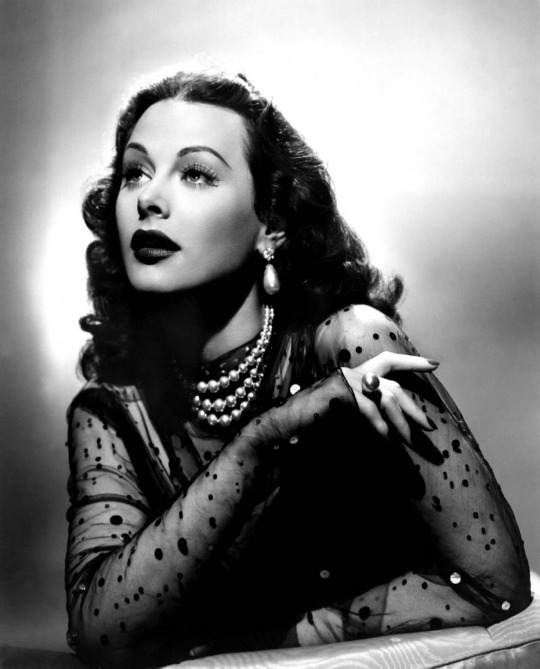
The only person you can find both on the Hollywood Walk of Fame and in the Inventor's Hall of Fame--her radio-frequency-hopping technology forms the basis for cordless phones, wi-fi, and a dozen other aspects of modern life. She was also passionate in her efforts to aid the Allies in WWII (unsurprising for a Jewish-Austrian Emigree to America), and her name served as the backbone for one of the best running jokes in what is possibly Mel Brooks' best movie. Look, Louis B. Mayer apparently believed he could plausibly promote her as "The world's most beautiful woman". Is an entire website full of people going to be less audacious than one Louis B. Mayer? I didn't think so!
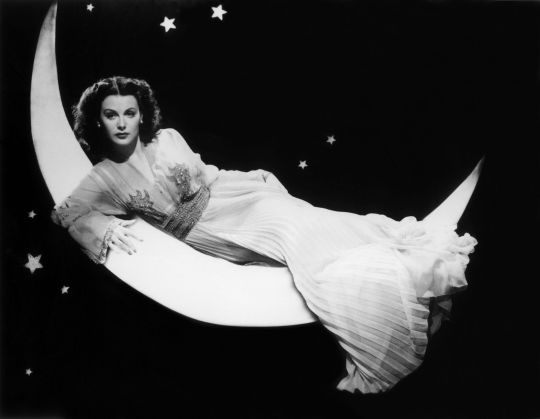
Described as "Hedy has the most incredible personal sophistication. She knows the peculiarly European art of being womanly; she knows what men want in a beautiful woman, what attracts them, and she forces herself to be these things. She has magnetism with warmth, something that neither Dietrich nor Garbo has managed to achieve" by Howard Sharpe, she managed to escape her controlling husband (and Nazi Germany) by a) Disguising as her maid and fleeing to Paris or b) Convincing the husband to let her wear all of her jewelry to a dinner, only to disappear afterwards. Also she was particularly clever and helped develop Frequency-Hopping Spread Spectrum (I can't really explain it but anyway...)
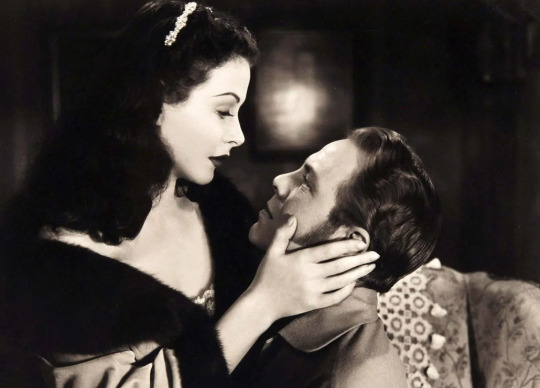
Her depiction of Delilah and Samson and Delilah just lives rent free in my head. The woman was gorgeous.
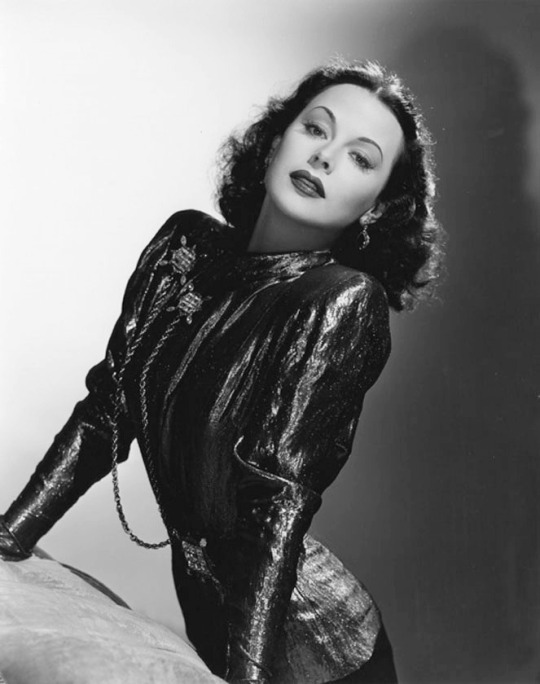
One of the most beautiful women ever in film, spoken by many critics and fans. Beautiful shapely figure, deeper seductive voice, and often played femme fatale roles. She was also brilliant and an inventor. Mainly self-taught, she invested her spare time, including on set between takes, in designing and drafting inventions, which included an improved traffic stoplight and a tablet that would dissolve in water to create a flavored carbonated drink, and much more.
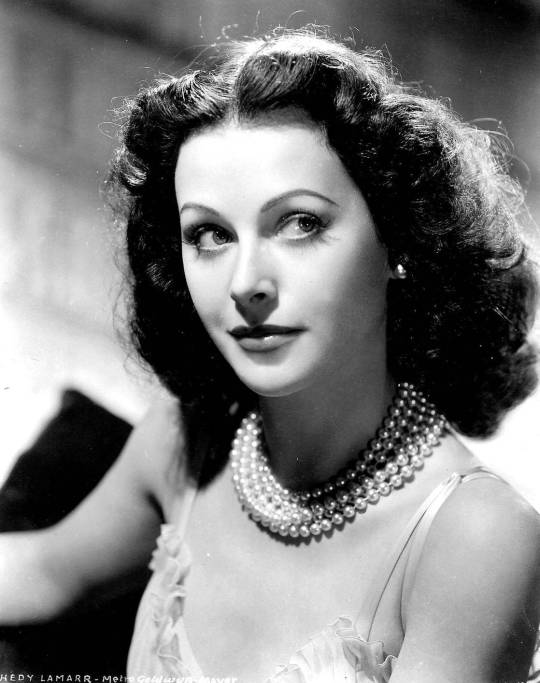
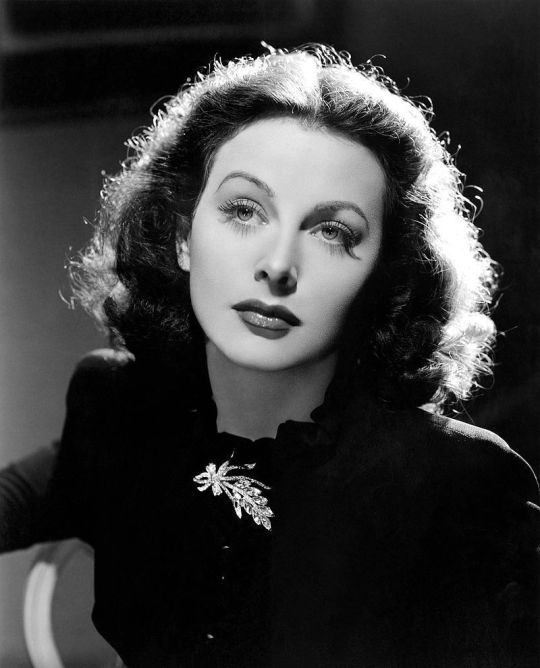
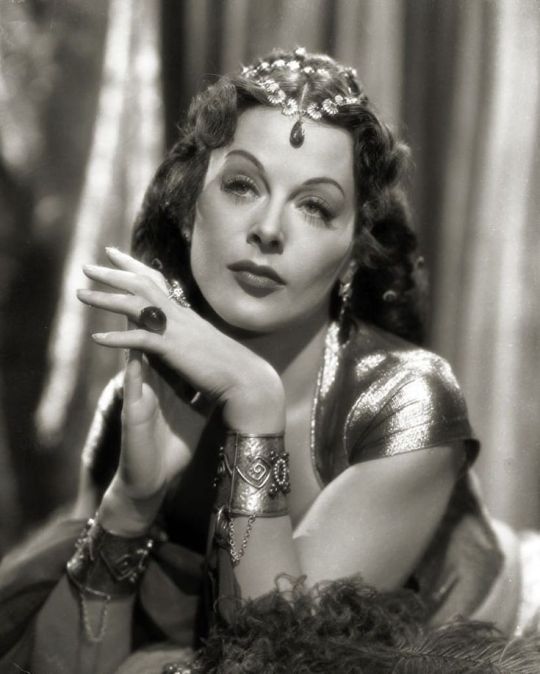
Gorgeous and brilliant pioneer of modern technology and the middle part.
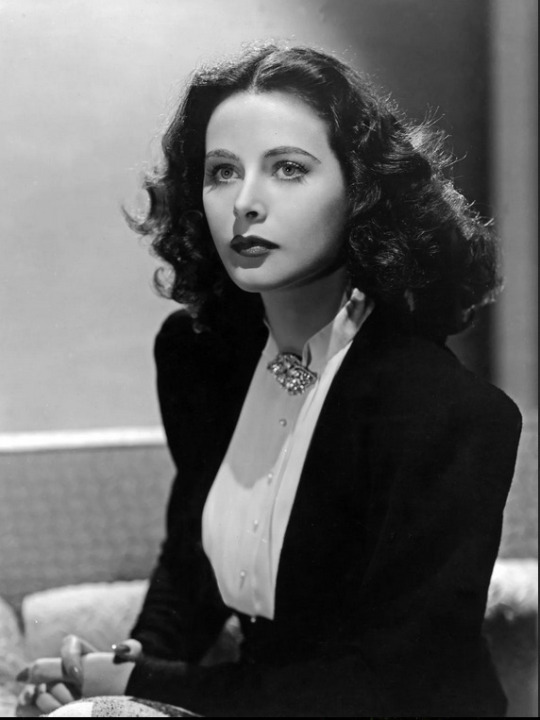
Marilyn Monroe:

She's amazing!!! A classic bombshell, as well as a strong women who overcame so many obstacles. She also advocated for others, like Ella Fitzgerald.
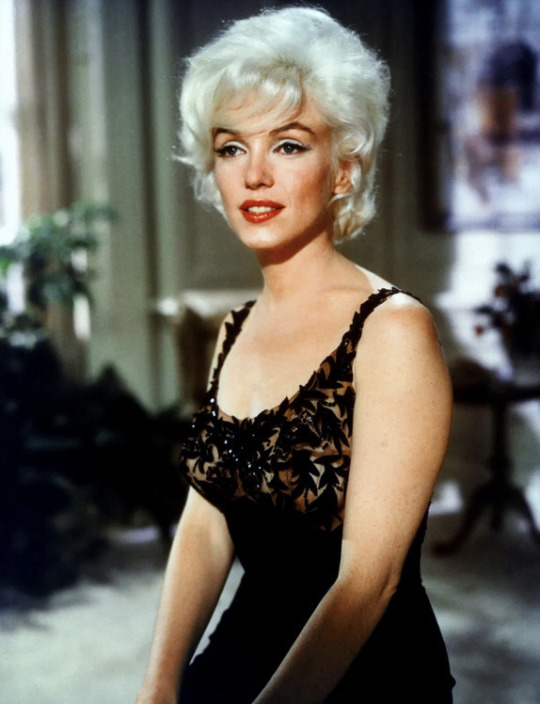
That fucking saxophone that cuts in whenever she appears on screen in Some Like it Hot
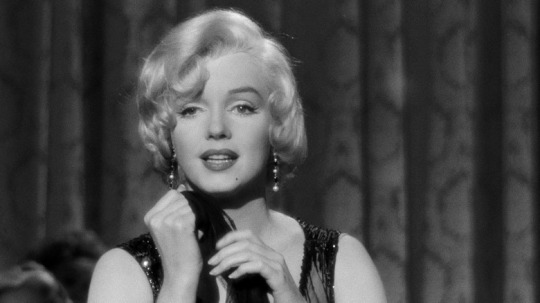
I mean, it's Marilyn Monroe. She's adorable. She's gorgeous. She funny. She's the total package

She's the original American sex symbol, an iconic beautiful woman with eyes you could get lost in, legs for days, gorgeous hair, and a cute tummy. Her voice! Just listen to her voice!!!!!
youtube
She is considered one of THE sex symbols of the 1960s and one of the greatest actresses of all time! She HAS to be on this list!

no vintage movie woman is more iconically hot

People are most familiar with pictures of her in the white dress or the Happy Birthday Mr President one, but imo she is at her most beautiful and looks most comfortable when she is photographed by women like Eve Arnold

It’s Marilyn Monroe. If Aphrodite was an actual person, she’d be Marilyn. Do I really need to say more?
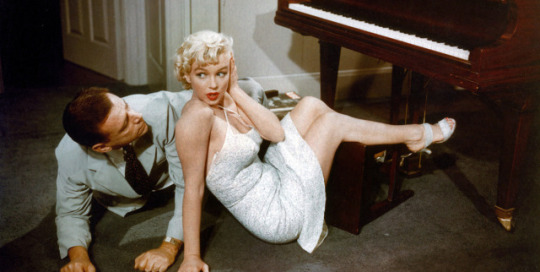
What can I say that hasn't been said? Marilyn's legacy is so much bigger than she was in life. She's a defining symbol of 50s and 60s Hollywood sex and it's obvious why. She was absolutely stunning and the camera loved her.

2K notes
·
View notes
Text
I want to take a few minutes to talk about my connection to Israel, as a Jew. I want to do that because some people desperately need to understand this, and also I'm procrastinating on uni homework.
Some years ago there were calls to return artifacts from the British Museum to the countries they're from. I know Britain pretty much went anywhere and took anything they wanted, but it got me thinking about cultural identities and their connection over time.
The middle east was home to some of the world's most ancient civilizations, and I'm sure most people living there could trace their lineage back to those civilizations (theoretically of course, we don't have data going that far). But how are they related to them? Do modern day Iraqis have any connection to Babylonians? They don't have a common language, religion, holidays, costumes… there is no cultural connection there. Babylonians happened to live in the same place, but other than that…
But this is not the case for Jews. Wherever Jewish people ended up throughout time, we kept a direct connection to ancient Israelites. I speak the same language they did thousands of years ago, I celebrate the holidays they celebrated. Our holy book is localized to Israel. We have holidays where we use local flora as decorations. We remembered our home, wherever we were, and waited to return.
The city I grew up in has flooding every winter. The whole area does (the Sharon region). It's because it used to be a swamp. There are 3 limestone ridges blocking the rivers from getting to the ocean, and when the early Zionist pioneers bought lands in this area (which were uninhabited swampland at the time) they had to open up tunnels through the limestone and drain the swamps before people could live here.
Why am I telling you this? Because we already did it before. Ancient Israelites already dug tunnels and drained swamps and lived here. There was a prayer during Yom Kippur specifically for the safety of people living here. All of the towns in the Sharon were razed by the Mamluks in the 13th century, and it became a swamp again. Until we returned.
To anyone who call us "colonizers": These "ancient" Israelites don't just share a religion with us, they ARE us. We were expelled from our homeland, but we kept our identity, we refused to let go, we kept wishing to come back home. We were always indigenous to Israel. We don't belong anywhere but here.
And now they're are trying to tell us that some people with a name invented by Rome to erase Judea and Israel, with a religion and language from Arabia, who didn't have a distinct cultural identity other than "Arab" until a few decades ago, belong here more than we do? I don't think so.
701 notes
·
View notes
Text


Selected Works from Toni Ebel
Toni Ebel was a pioneering trans woman and a remarkable figure in art and queer history. Ebel's paintings were primarily landscapes and portraits, including the self-portrait shown here. As one of the first individuals to receive gender confirmation surgery, she navigated her identity during a time of immense societal constraints. Ebel worked as housekeeping staff at the Institut für Sexualwissenschaft, an institution at the forefront of gender and sexuality studies, which also led her to connect with other LGBTQ+ people.
Toni Ebel also shared a profound relationship with Charlotte Charlaque, a fellow trans woman who worked as a receptionist at the Institut für Sexualwissenschaft. Their bond highlighted the close-knit nature of the German trans community at the time and underscored the importance of mutual support in an often hostile world. They navigated World War II as Jewish trans women, at times parting for safety. Ebel ended up in East Germany and continued working as a painter, while Charlaque spent the rest of her life in the United States working as an actress.
You can find these works and more in our gallery!
409 notes
·
View notes
Text
✰NEPTUNE IN ARIES✰
A once in a lifetime astrological event!

©️GeminiMoonMadness
✧・゚:*✧・゚:* ✧・゚: *✧・゚:* ✧・゚: *✧・゚:*
Neptune takes roughly 165 years to transit the whole zodiac and has been happily swimming through his own sign of Pisces since 2011. Neptune will transit Aries from 2025 to 2039, spending about 12 and a half years there in total, with a few dips in and out at either end. This represents the start of a new cycle of inspiration and change.
✧・゚:*✧・゚:* ✧・゚: *✧・゚:* ✧・゚: *✧・゚:*
Here are the dates:
-Enters Aries on 30 March 2025
-Retrogrades into Pisces on 22 October 2025
-Re-enters Aries to stay from 26 January 2026
-Dips into Taurus on 21 May 2038
-Final visit to Aries from 21 October 2038
-Enters Taurus to stay on 23 March 2039
✧・゚: *✧・゚:* ✧・゚: *✧・゚:* ✧・゚: *✧・゚:*
Neptune was last in Aries from 1861 to 1875 and brought to light humanity´s impulsiveness translated into wars, the creativity to invent and the determination to discover.
As Neptune transits the signs, it reveals what we idealise and look to for redemption or salvation. In Capricorn (1984-1998) it fed the idealisation of corporations and big business and in Aquarius (1998-2012) it idealised science and technology. In Pisces (2011-2025), it appears to be idealising deception itself because we’re all drowning in fake news and propaganda in a crazy-making post-truth hall of mirrors.
✧・゚: *✧・゚:* ✧・゚: *✧・゚:* ✧・゚: *✧・゚:*
WHAT HAPPENED IN HISTORY THE LAST TIME NEPTUNE WAS IN ARIES?
60 – 73 CE
-In Rome Christianity was spreading fast
-In Palestine there was a Jewish uprising against the Romans in 66 and Josephus wrote his history of the Jewish War which became a major source on Jesus.
388 – 401
-Christianity had become the official imperial religion of the Roman Empire in 391
-Theodosius prohibited all pagan cults and worship.
432 – 419 BCE
-The ancient Greek city states were always having falling outs/battling.
-The Peloponnesian War between Athens and Sparta began and ran for decades.
879-892
-Alfred the Great created a small fleet of ships to fight naval battles against the Vikings.
1206 – 1219
-Genghis Khan began his conquest of Eurasia
-The Christian Crusades were in full swing
1370 – 1383
-The Hundred Years War between England and France was going strong, it started in 1337 and ended in 1453.
-The Catholic Church split in 1378 and there were two rival popes until 1417
-The Church came under attack from 1377 by John Wycliffe, an English theologian.
-John Wycliffe (as above) completed the first translation of the Bible into English in 1382.
-1370s, the story of Robin Hood began to circulate (a tale of a classic Aries character).
1534-1547
-Henry VIII broke from Rome and declared himself supreme head of the Church of England
-This led to the dissolution of the monasteries in 1536 and the destruction of religious relics and churches, and endless fighting between Catholics and Protestants.
-In the 1540s Valerius Cordus wrote Dispensatorium, the first pharmacopeia covering medicinal plants, minerals and how to make drugs, published in 1546. He also discovered ether in 1540, which was used in pain relief for surgery – and for getting as high as a kite!
1697 – 1711
- Lots of fighting and rebellions in Europe over various things, including the War of Spanish Succession in which England took Gibraltar in 1704.
-England was getting tired of fighting the Scots, and in 1707 the Act of Union formed a new entity called Great Britain, unifying England and Scotland.
1861-1874
- American civil war commenced
- germ theory was invented
-Violence on the Australian goldfields
-Slavery
-Abraham Lincoln becomes president
-Franco-Prussian War
(Can you notice a trend?)
✧・゚: *✧・゚:* ✧・゚: *✧・゚:* ✧・゚: *✧・゚:*
PREDICTION FOR 2025-2039:
Neptune in Aries could bring pioneering visions that reach into every part of society, with lots of new ideas and progressive thinking. There could be idealistic revolutions and social activism, visionary rebellions, crusades for truth and religious wars. Wars may be fought based on lies and deception (nothing new there then), or fought with bioweapons, chemicals and viruses.
At best, Neptune could inspire compassionate action and leadership that takes us away from the potential for war. But it could just as easily reveal the corruption and weakness of leaders that create power vacuums and trigger war by accident.
There may also be a massive loss of faith in leadership, a loss of belief in the nation or the system. People could turn away from the system out of disillusionment or even boredom, and lose themselves in escapist pursuits, like gaming or virtual reality.
✧・゚: *✧・゚:* ✧・゚: *✧・゚:* ✧・゚: *✧・゚:*
WHAT HOUSE IS YOUR NEPTUNE IN?
WHAT HOUSE IS YOUR ARIES IN?
WHAT DEGREE IS YOUR NEPTUNE?
✧・゚: *✧・゚:* ✧・゚: *✧・゚:* ✧・゚: *✧・゚:*
#Neptune#astrology advice#astrology#astrology observations#astro community#astrology community#astro posts#astro#astrology readings#astrology posts#astro observations#astro transit#transit astrology#Neptune in Aries#Aries#Neptune transit#Astro readings#history#astrology history#astrology predictions#Aries transit#outer planet#astrology transit#astrology event#astrologist#astrology aspects#astrologer#astrology page#Aries history
185 notes
·
View notes
Text
Collecting minority points like it's a contest 💪
Alright new game for jewish converts only;
Why did you become Jewish?
Wrong answers only
#meme#jewish conversion#the minority points i have acrewed: trans. gay. gay AND trans. severely mentally ill. gamer.#also i'm becoming jewish because i am a pioneer. first jew in my family? first doctor (in progress)? first transsexual? i'm doing it ALL
330 notes
·
View notes
Text

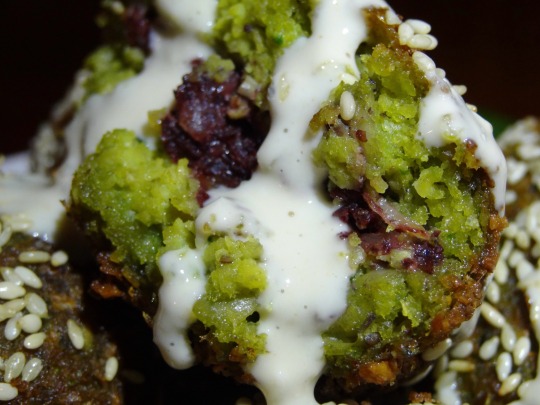
[ID: First image shows large falafel balls, one pulled apart to show that it is bright green and red on the inside, on a plate alongside green chilis, parsley, and pickled turnips. Second image is an extreme close-up of the inside of a halved falafel ball drizzled with tahina sauce. End ID]
فلافل محشي فلسطيني / Falafel muhashshi falastini (Palestinian stuffed falafel)
Falafel (فَلَافِل) is of contested origin. Various hypotheses hold that it was invented in Egypt any time between the era of the Pharoahs and the late nineteenth century (when the first written references to it appear). In Egypt, it is known as طَعْمِيَّة (ṭa'miyya)—the diminutive of طَعَا�� "piece of food"—and is made with fava beans. It was probably in Palestine that the dish first came to be made entirely with chickpeas.
The etymology of the word "falafel" is also contested. It is perhaps from the plural of an earlier Arabic word *filfal, from Aramaic 𐡐𐡋𐡐𐡉𐡋 "pilpāl," "small round thing, peppercorn"; or from "مفلفل" "mfelfel," a word meaning "peppered," from "فلفل" "pepper" + participle prefix مُ "mu."
This recipe is for deep-fried chickpea falafel with an onion and sumac حَشْوَة (ḥashua), or filling; falafel are also sometimes stuffed with labna. The spice-, aromatic-, and herb-heavy batter includes additions common to Palestinian recipes—such as dill seeds and green onions—and produces falafel balls with moist, tender interiors and crisp exteriors. The sumac-onion filling is tart and smooth, and the nutty, rich, and bright tahina-based sauce lightens the dish and provides a play of textures.
Falafel with a filling is falafel مُحَشّي (muḥashshi or maḥshshi), from حَشَّى (ḥashshā) "to stuff, to fill." While plain falafel may be eaten alongside sauces, vegetables, and pickles as a meal or a snack, or eaten in flatbread wraps or kmaj bread, stuffed falafel are usually made larger and eaten on their own, not in a wrap or sandwich.
Falafel has gone through varying processes of adoption, recognition, nationalization, claiming, and re-patriation in Zionist settlers' writing. A general arc may be traced from adoption during the Mandate years, to nationalization and claiming in the years following the Nakba until the end of the 20th century, and back to re-Arabization in the 21st. However, settlers disagree with each other about the value and qualities of the dish within any given period.
What is consistent is that falafel maintains a strategic ambiguity: particular qualities thought to belong to "Arabs" may be assigned, revoked, rearranged, and reassigned to it (and to other foodstuffs and cultural products) at will, in accordance with broader trends in politics, economics, and culture, or in service of the particular argument that a settler (or foreign Zionist) wishes to make.
Mandate Palestine, 1920s – early '30s: Secular and collective
While most scholars hold that claims of an ancient origin for falafel are unfounded, it was certainly being eaten in Palestine by the 1920s. Yael Raviv writes that Jewish settlers of the second and third "עליות" ("aliyot," waves of immigration; singular "עליה" "aliya") tended to adopt falafel, and other Palestinian foodstuffs, largely uncritically. They viewed Palestinian Arabs as holding vessels that had preserved Biblical culture unchanged, and that could therefore serve as models for a "new," agriculturally rooted, physically active, masculine Jewry that would leave behind the supposed errors of "old" European Jewishness, including its culinary traditions—though of course the Arab diet would need to be "corrected" and "civilized" before it was wholly suitable for this purpose.
Falafel was further endeared to these "חֲלוּצִים" ("halutzim," "pioneers") by its status as a street food. The undesirable "old" European Jewishness was associated with the insularity of the nuclear family and the bourgeois laziness of indoor living. The קִבּוּצים ("Kibbutzim," communal living centers), though they represented only a small minority of settlers, furnished a constrasting ideal of modern, earthy Jewishness: they left food production to non-resident professional cooks, eliding the role of the private, domestic kitchen. Falafel slotted in well with these ascetic ideals: like the archetypal Arabic bread and olive oil eaten by the Jewish farmer in his field, it was hardy, cheap, quick, portable, and unconnected to the indoor kitchen.
The author of a 1929 article in דאר היום ("Doar Hyom," "Today's Mail") shows unrestrained admiration for the "[]מזרחי" ("Oriental") food, writing of his purchase of falafel stuffed in a "פיתה" ("pita") that:
רק בני-ערב, ואחיהם — היהודים הספרדים — רק הם עלולים "להכנת מטעם מפולפל" שכזה, הנעים כל כך לחיך [...].
("Only the Arabs, and their brothers—the Sepherdi Jews—only they are likely to create a delicacy so 'peppered' [a play on the פ-ל-פ-ל (f-l-f-l) word root], one so pleasing to the palate".)
Falafel's strong association with "Arabs" (i.e., Palestinians), however, did blemish the foodstuff in the eyes of some as early as 1930. An article in the English-language Palestine Bulletin told the story of Kamel Ibn Hassan's trial for the murder of a British soldier, lingering on the "Arab" "hashish addicts," "women of the streets," and "concessionaires" who rounded out this lurid glimpse into the "underground life lived by a certain section of Arab Haifa"; it was in this context that Kamel's "'business' of falafel" (scare quotes original) was mentioned.
Mandate Palestine, late 1930s–40s: A popular Oriental dish
In 1933, only three licensed falafel vendors operated in Tel Aviv; but by December 1939, Lilian Cornfeld (columnist for the English-language Palestine Post) could lament that "filafel cakes" were "proclaiming their odoriferous presence from every street corner," no longer "restricted to the seashore and Oriental sections" of the city.
Settlers' attitudes to falafel at this time continued to range from appreciation to fascinated disgust to ambivalence, and references continued to focus on its cheapness and quickness. According to Cornfeld, though the "orgy of summertime eating" of which falafel was the "most popular" representative caused some dietary "damage" to children, and though the "rather messy and dubious looking" food was deep-fried, the chickpeas themselves were still of "great nutritional value": "However much we may object to frying, — if fry you must, this at least is the proper way of doing it."
Cornfeld's article, appearing 10 years after the 1929 reference to falafel in pita quoted above, further specifies how this dish was constructed:
There is first half a pita (Arab loaf), slit open and filled with five filafels, a few fried chips [i.e. French fries] and sometimes even a little salad. The whole is smeared over with Tehina, a local mayonnaise made with sesame oil (emphasis original).
The ethnicity of these early vendors is not explicitly mentioned in these accounts. The Zionist "תוצרת הארץ" "totzeret ha’aretz"; "produce of the land") campaign in the 1930s and 1940s recommended buying only Jewish produce and using only Jewish labor, but it did not achieve unilaterial success, so it is not assured that settlers would not be buying from Palestinian vendors. There were, however, also Mizrahi Jewish vendors in Tel Aviv at this time.
The WW2-era "צֶנַע" ("tzena"; "frugality") period of rationing meat, which was enforced by British mandatory authorities beginning in 1939 and persisting until 1959, may also have contributed to the popularity of falafel during this time—though urban settlers employed various strategies to maintain access to significant amounts of meat.
Israel and elsewhere, 1950s – early 60s: The dawn of de-Arabization
After the Nakba (the ethnic cleansing of broad swathes of Palestine in the creation of the modern state of "Israel"), the task of producing a national Israeli identity and culture tied to the land, and of asserting that Palestinians had no like sense of national identity, acquired new urgency. The claiming of falafel as "the national snack of Israel," the decoupling of the dish from any association with "Arabs" (in settlers' writing of any time period, this means "Palestinians"), and the insistence on associating it with "Israel" and with "Jews," mark this time period in Israeli and U.S.-ian newspaper articles, travelogues, and cookbooks.
During this period, falafel remained popular despite the "reintegrat[ion]" of the nuclear family into the "national project," and the attendant increase in cooking within the familial home. It was still admirably quick, efficient, hardy, and frequently eaten outside. When it was homemade, the dish could be used rhetorically to marry older ideas about embodying a "new" Jewishness and a return to the land through dietary habits, with the recent return to the home kitchen. In 1952, Rachel Yanait Ben-Zvi, the wife of the second President of Israel, wrote to a South African Zionist women's society:
I prefer Oriental dishes and am inclined towards vegetarianism and naturalism, since we are returning to our homeland, going back to our origin, to our climate, our landscape and it is only natural that we liberate ourselves from many of the habits we acquired in the course of our wanderings in many countries, different from our own. [...] Meals at the President's table [...] consist mainly of various kinds of vegetable prepared in the Oriental manner which we like as well as [...] home-made Falafel, and, of course vegetables and fruits of the season.
Out of doors, associations of falafel with low prices, with profusion and excess, and with youth, travelling and vacation (especially to urban locales and the seaside) continue. Falafel as part and parcel of Israeli locales is given new emphasis: a reference to the pervasive smell of frying falafel rounds out the description of a chaotic, crowded, clamorous scene in the compact, winding streets of any old city. Falafel increasingly stands metonymically for Israel, especially in articles written to entice Jewish tourists and settlers: no one is held to have visited Israel unless they have tried real Israeli falafel. A 1958 song ("ולנו יש פלאפל", "And We Have Falafel") avers that:
הַיּוֹם הוּא רַק יוֹרֵד מִן הַמָּטוֹס [...] כְבָר קוֹנֶה פָלָאפֶל וְשׁוֹתֶה גָּזוֹז כִּי זֶה הַמַּאֲכָל הַלְּאֻמִּי שֶׁל יִשְׂרָאֵל
("Today when [a Jew] gets off the plane [to Israel] he immediately has a falafel and drinks gazoz [...] because this is the national dish of Israel"). A 1962 story in Israel Today features a boy visiting Israel responding to the question "Have you learned Hebrew yet?" by asserting "I know what falafel is." Recipes for falafel appear alongside ads for smoked lox and gefilte fish in U.S.-ian Jewish magazines; falafel was served by Zionist student groups in U.S.-ian universities beginning in the 1950s and continuing to now.
These de-Arabization and nationalization processes were possible in part because it was often Mizrahim (West Asian and North African Jews) who introduced Israelis to Palestinian food—especially after 1950, when they began to immigrate to Israel in larger numbers. Even if unfamiliar with specific Palestinian dishes, Mizrahim were at least familiar with many of the ingredients, taste profiles, and cooking methods involved in preparing them. They were also more willing to maintain their familiar foodways as settlers than were Zionist Ashkenazim, who often wanted to distance themselves from European and diaspora Jewish culture.
Despite their longstanding segregation from Israeli Ashkenazim (and the desire of Ashkenazim to create a "new" European Judaism separate from the indolence and ignorance of "Oriental" Jews, including their wayward foodways), Mizrahim were still preferable to Palestinian Arabs as a point of origin for Israel's "national snack." When associated with Mizrahi vendors, falafel could be considered both Oriental and Jewish (note that Sephardim and Mizrahim are unilaterally not considered to be "Arabs" in this writing).
Thus food writing of the 1950s and 60s (and some food writing today) asserts, contrary to settlers' writing of the 1920s and 30s, that falafel had been introduced to Israel by Jewish immigrants from Syria, Yemen, or Morocco, who had been used to eating it in their native countries—this, despite the fact that Yemen and Morocco did not at this time have falafel dishes. Even texts critical of Zionism echoed this narrative. In fact, however, Yemeni vendors had learned to make falafel in Egypt on their way to Palestine and Israel, and probably found falafel already being sold and eaten there when they arrived.Meneley, Anne2007 Like an Extra Virgin. American Anthropologist 109(4):678–687
Meanwhile, "pita" (Palestinian Arabic: خبز الكماج; khubbiz al-kmaj) was undergoing in some quarters a similar process of Israelization; it remained "Arab" in others. In 1956, a Boston-born settler in Haifa wrote for The Jewish Post:
The baking of the pittah loaves is still an Arab monopoly [in Israel], and the food is not available at groceries or bakeries which serve Jewish clientele exclusively. For our Oriental meal to be a success we must have pittah, so the more advance shopping must be done.
This "Arab monopoly" in fact did not extent to an Arab monopoly in discourse: it was a mere four years later that the National Jewish Post and Opinion described "Peeta" as an "Israeli thin bread." Two years after that, the U.S.-published My Jewish Kitchen: The Momales Ta'am Cookbook (co-authored by Zionist writer Shushannah Spector) defined "pitta" as an "Israeli roll."
Despite all this scrubbing work, settlers' attitudes towards falafel in the late 1950s were not wholly positive, and references to the dish as having been "appropriated from the [Palestinian] Arabs" did not disappear. A 1958 article, written by a Boston-born man who had settled in Israel in 1948 and published in U.S.-ian Zionist magazine Midstream, repeats the usual associations of falafel with the "younger set" of visitors from kibbutzim to "urban" locales; it also denigrates it as a “formidably indigestible Arab delicacy concocted from highly spiced legumes rolled into little balls, fried in grease, and then inserted into an underbaked piece of dough, known as a pita.”
Thus settlers were ambivalent about khubbiz as well. If their food writing sometimes refers to pita as "doughy" or "underbaked," it is perhaps because they were purchasing it from stores rather than baking it at home—bakeries sometimes underbake their khubbiz so that it retains more water, since it is sold by weight.
Israel and elsewhere, late 1960s–2010s: Falafel with even fewer Arabs
The sanitization of falafel would be more complete in the 60s and 70s, as falafel was gradually moved out of separate "Oriental dishes" categories and into the main sections of Israeli cookbooks. A widespread return to כַּשְׁרוּת (kashrut; dietary laws) meant that falafel, a פַּרְוֶה (parve) dish—one that contained no meat or dairy—was a convenient addition on occasions when food intersected with nationalist institutions, such as at state dinners and in the mess halls of Israeli military forces.
This, however, still did not prohibit Israelis from displaying ambivalence towards the food. Falafel was more likely to be glorified as a symbol of Jewish Israel in foreign magazines and tourist guides, including in the U.S.A. and Italy, than it was to be praised in Israeli Zionist publications.
Where falafel did maintain an association with Palestinians, it was to assert that their versions of it had been inferior. In 1969, Israeli writer Ruth Bondy opines:
Experience says that if we are to form an affection for a people we should find something admirable about its customs and folklore, its food or girls, its poetry and music. True, we have taken the first steps in this direction [with Palestinians]: we like kebab, hummous, tehina and falafel. The trouble is that these have already become Jewish dishes and are prepared more tastily by every Rumanian restaurateur than by the natives of Nablus.
Opinions about falafel in this case seem to serve as a mirror for political opinions about Palestinians: the same writer had asserted, on the previous page, that the "ideal situation, of course, would be to keep all the territories we are holding today—but without so many Arabs. A few Arabs would even be desirable, for reasons of local color, raising pigs for non-Moslems and serving bread on the Passover, but not in their masses" (trans. Israel L. Taslitt).
Later narratives tended to retrench the Israelization of falafel, often acknowledging that falafel had existed in Palestine prior to Zionist incursion, but holding that Jewish settlers had made significant changes to its preparation that were ultimately responsible for making it into a worldwide favorite. Joan Nathan's 2001 Foods of Israel Today, for example, claimed that, while fava and chickpea falafel had both preëxisted the British Mandate period, Mizrahi settlers caused chickpeas to be the only pulse used in falafel.
Gil Marks, who had echoed this narrative in his 2010 Encyclopedia of Jewish Food, later attributed the success of Palestinian foods to settlers' inventiveness: "Jews didn’t invent falafel. They didn’t invent hummus. They didn’t invent pita. But what they did invent was the sandwich. Putting it all together. And somehow that took off and now I have three hummus restaurants near my house on the Upper West Side.”
Israel and elsewhere, 2000s – 2020s: Re-Arabization; or, "Local color"
Ronald Ranta has identified a trend of "re-Arabizing" Palestinian food in Israeli discourse of the late 2000s and later: cooks, authors, and brands acknowledge a food's origin or identity as "Arab," or occasionally even "Palestinian," and consumers assert that Palestinian and Israeli-Palestinian (i.e., Israeli citizens of Palestinian ancestry) preparations of foods are superior to, or more "authentic" than, Jewish-Israeli ones. Israeli and Israeli-Palestinian brands and restaurants market various foods, including falafel, as "אסלי" ("asli"), from the Arabic "أَصْلِيّ" ("ʔaṣliyy"; "original"), or "בלדי" ("baladi"), from the Arabic "بَلَدِيّ" ("baladiyy"; "native" or "my land").
This dedication to multiculturalism may seem like progress, but Ranta cautions that it can also be analyzed as a new strategy in a consistent pattern of marginalization of the indigenous population: "the Arab-Palestinian other is re-colonized and re-imagined only as a resource for tasty food [...] which has been de-politicized[;] whatever is useful and tasty is consumed, adapted and appropriated, while the rest of its culture is marginalized and discarded." This is the "serving bread" and "local color" described by Bondy: "Arabs" are thought of in terms of their usefulness to settlers, and not as equal political participants in the nation. For Ranta, the "re-Arabizing" of Palestinian food thus marks a new era in Israel's "confiden[ce]" in its dominance over the indigenous population.
So this repatriation of Palestinian food is limited insofar as it does not extend to an acknowledgement of Palestinians' political aspirations, or a rejection of the Zionist state. Food, like other indicators and aspects of culture, is a "safe" avenue for engagement with colonized populations even when politics is not.
The acknowledgement of Palestinian identity as an attempt to neutralize political dissent, or perhaps to resolve the contradictions inherent in liberal Zionist identity, can also be seen in scholarship about Israeli food culture. This scholarship tends to focus on narratives about food in the cultural domain, ignoring the material impacts of the settler-colonialist state's control over the production and distribution of food (something that Ranta does as well). Food is said to "cross[] borders" and "transcend[] cultural barriers" without examination of who put the borders there (or where, or why, or how, or when). Disinterest in material realities is cultivated so that anodyne narratives about food as “a bridge” between divides can be pursued.
Raviv, for example, acknowledges that falafel's de-Palestinianization was inspired by anti-Arab sentiment, and that claiming falafel in support of "Jewish nationalism" was a result of "a connection between the people and a common land and history [needing] to be created artificially"; however, after referring euphemistically to the "accelerated" circumstances of Israel's creation, she supports a shared identity for falafel in which it can also be recognized as "Israeli." She concludes that this should not pose a problem for Palestinians, since "falafel was never produced through the labor of a colonized population, nor was Palestinian land appropriated for the purpose of growing chickpeas for its preparation. Thus, falafel is not a tool of oppression."
Palestine and Israel, 1960s – 2020s: Material realities
Yet chickpeas have been grown in Israel for decades, all of them necessarily on appropriated Palestinian land. Experimentation with planting in the arid conditions of the south continues, with the result that today, chickpea is the major pulse crop in the country. An estimated 17,670,000 kilograms of chickpeas were produced in Israel in 2021; at that time, this figure had increased by an average of 3.5% each year since 1966. 73,110 kilograms of that 2021 crop was exported (this even after several years of consecutive decline in chickpea exports following a peak in 2018), representing $945,000 in exports of dried chickpeas alone.
The majority of these chickpeas ($872,000) were exported to the West Bank and Gaza; Palestinians' inability to control their own imports (all of which must pass through Israeli customs, and which are heavily taxed or else completely denied entry), and Israeli settler violence and government expropriation of land, water, and electricity resources (which make agriculture difficult), mean that Palestine functions as a captive market for Israeli exports. Israeli goods are the only ones that enter Palestinian markets freely.
By contrast, Palestinian exports, as well as imports, are subject to taxation by Israel, and only a small minority of imports to Israel come from Palestine ($1.13 million out of $22.4 million of dried chickpeas in 2021).
The 1967 occupation of the West Bank has besides had a demonstrable impact on Palestinians' ability to grow chickpeas for domestic consumption or export in the first place, as data on the changing uses of agricultural land in the area from 1966–2001 allow us to see. Chickpeas, along with wheat, barley, fenugreek, and dura, made up a major part of farmers' crops from 1840 to 1914; but by 2001, the combined area devoted to these field crops was only a third of its 1966 value. The total area given over to chickpeas, lentils and vetch, in particular, shrank from 14,380 hectares in 1966 to 3,950 hectares in 1983.
Part of this decrease in production was due to a shortage of agricultural labor, as Palestinians, newly deprived of land or of the necessary water, capital, and resources to work it—and in defiance of Raviv's assertion that "falafel was never produced through the labor of a colonized population"—sought jobs as day laborers on Israeli fields.
The dearth of water was perhaps especially limiting. Palestinians may not build anything without a permit, which the Israeli military may deny for any, or for no, reason: no Palestinian's request for a permit to dig a well has been approved in the West Bank since 1967. Israel drains aquifiers for its own use and forbids Palestinians to gather rainwater, which the Israeli military claims to own. This lack of water led to land which had previously been used to grow other crops being transitioned into olive tree fields, which do not require as much water or labor to tend.
In Gaza as well, occupation systematically denies Palestinians of food itself, not just narratives about food. The majority of the population in Gaza is food-insecure, as Israel allows only precisely determined (and scant) amounts of food to cross its borders. Gazans rely largely on canned goods, such as chickpeas (often purchased at subsidized rates through food aid programs run by international NGOs), because they do not require scarce water or fuel to prepare—but canned chickpeas cannot be used to prepare a typical deep-fried falafel recipe (the discs would fall apart while frying). There is, besides, a continual shortage of oil (of which only a pre-determined amount of calories are allowed to enter the Strip). Any narrative about Israeli food culture that does not take these and other realities of settler-colonialism into account is less than half complete.
Of course, falafel is far from the only food impacted by this long campaign of starvation, and the strategy is only intensifying: as of December 2023, children are reported to have died by starvation in the besieged Gaza Strip.
Support Palestinian resistance by calling Elbit System’s (Israel’s primary weapons manufacturer) landlord; donating to Palestine Action’s bail fund; buying an e-sim for distribution in Gaza; or donating to help a family leave Gaza.
Equipment:
A meat grinder, or a food processor, or a high-speed or immersion blender, or a mortar and pestle and an enormous store of patience
A pot, for frying
A kitchen thermometer (optional)
Ingredients:
Makes 12 large falafel balls; serves 4 (if eaten on their own).
For the فلافل (falafel):
500g dried chickpeas (1010g once soaked)
1 large onion
4 cloves garlic
1 Tbsp cumin seeds
1 Tbsp coriander seeds
2 tsp dill seeds (عين جرادة; optional)
1 medium green chili pepper (such as a jalapeño), or 1/2 large one (such as a ram's horn / فلفل قرن الغزال)
2 stalks green onion (3 if the stalks are thin) (optional)
Large bunch (50g) parsley, stems on; or half parsley and half cilantro
2 Tbsp sea salt
2 tsp baking soda (optional)
For the حَشوة (filling):
2 large yellow onions, diced
1/4 cup coarsely ground sumac
4 tsp shatta (شطة: red chili paste), optional
Salt, to taste
3 Tbsp olive oil
For the طراطور (tarator):
3 cloves garlic
1/2 tsp table salt
1/4 cup white tahina
Juice of half a lemon (2 Tbsp)
2 Tbsp vegan yoghurt (لبن رائب; optional)
About 1/4 cup water
To make cultured vegan yoghurt, follow my labna recipe with 1 cup, instead of 3/4 cup, of water; skip the straining step.
To fry:
Several cups neutral oil
Untoasted hulled sesame seeds (optional)
Instructions:
1. If using whole spices, lightly toast in a dry skillet over medium heat, then grind with a mortar and pestle or spice mill.
2. Grind chickpeas, onion, garlic, chili, and herbs. Modern Palestinian recipes tend to use powered meat grinders; you could also use a food processor, speed blender, or immersion blender. Some recipes set aside some of the chickpeas, aromatics, and herbs and mince them finely, passing the knife over them several times, then mixing them in with the ground mixture to give the final product some texture. Consult your own preferences.
To mimic the stone-ground texture of traditional falafel, I used a mortar and pestle. I found this to produce a tender, creamy, moist texture on the inside, with the expected crunchy exterior. It took me about two hours to grind a half-batch of this recipe this way, so I don't per se recommend it, but know that it is possible if you don't have any powered tools.
3. Mix in salt, spices, and baking soda and stir thoroughly to combine. Allow to chill in the fridge while you prepare the filling and sauce.
If you do not plan to fry all of the batter right away, only add baking soda to the portion that you will fry immediately. Refrigerate the rest of the batter for up to 2 days, or freeze it for up to 2 months. Add and incorporate baking soda immediately before frying. Frozen batter will need to be thawed before shaping and frying.
For the filling:
1. Heat olive oil in a skillet over medium heat. Fry onion and a pinch of salt for several minutes, until translucent. Remove from heat.
2. Add sumac and stir to combine. Add shatta, if desired, and stir.
For the tarator:
1. Grind garlic and salt in a mortar and pestle (if you don't have one, finely mince and then crush the garlic with the flat of your knife).
2. Add garlic to a bowl along with tahina and whisk. You will notice the mixture growing smoother and thicker as the garlic works as an emulsifier.
3. Gradually add lemon juice and continue whisking until smooth. Add yoghurt, if desired, and whisk again.
4. Add water slowly while whisking until desired consistency is achieved. Taste and adjust salt.
To fry:
1. Heat several inches of oil in a small or medium pot to about 350 °F (175 °C). A piece of batter dropped in the oil should float and immediately form bubbles, but should not sizzle violently. (With a small pot on my gas stove, my heat was at medium-low).
2. Use your hands or a large falafel mold to shape the falafel.
To use a falafel mold: Dip your mold into water. If you choose to cover both sides of the falafel with sesame seeds, first sprinkle sesame seeds into the mold; then apply a flat layer of batter. Add a spoonful of filling into the center, and then cover it with a heaping mound of batter. Using a spoon, scrape from the center to the edge of the mold repeatedly, while rotating the mold, to shape the falafel into a disc with a slightly rounded top. Sprinkle the top with sesame seeds.
To use your hands: wet your hands slightly and take up a small handful of batter. Shape it into a slightly flattened sphere in your palm and form an indentation in the center; fill the indentation with filling. Cover it with more batter, then gently squeeze between both hands to shape. Sprinkle with sesame seeds as desired.
3. Use a slotted spoon or kitchen spider to lower falafel balls into the oil as they are formed. Fry, flipping as necessary, until discs are a uniform brown (keep in mind that they will darken another shade once removed from the oil). Remove onto a wire rack or paper towel.
If the pot you are using is inclined to stick, be sure to scrape the bottom and agitate each falafel disc a couple seconds after dropping it in.
4. Repeat until you run out of batter. Occasionally use a slotted spoon or small sieve to remove any excess sesame seeds from the oil so they do not burn and become acrid.
Serve immediately with sauce, sliced vegetables, and pickles, as desired.


#Palestine#Israel#vegetarian recipes#Palestinian#falafel#chickpeas#sumac#onions#garlic#parsley#cilantro#dill seeds#sesame seeds#tahina#yoghurt#long post /
805 notes
·
View notes
Text
Quotes from "Executed Jews" I want to especially highlight:
Two distinct patterns of antisemitism can be identified by the Jewish holidays that celebrate triumphs over them: Purim and Hanukkah. In the Purim version of antisemitism, exemplified by the Persian genocidal decrees in the biblical Book of Esther, the goal is openly stated and unambiguous: Kill all the Jews. In the Hanukkah version of antisemitism, whose appearances range from the Spanish Inquisition to the Soviet regime, the goal is still to eliminate Jewish civilization. But in the Hanukkah version, this goal could theoretically be accomplished simply by destroying Jewish civilization, while leaving the warm, de-Jewed bodies of its former practitioners intact.
For this reason, the Hanukkah version of antisemitism often employs Jews as its agents. It requires not dead Jews but cool Jews: those willing to give up whatever specific aspect of Jewish civilization is currently uncool. Of course, Judaism has always been uncool, going back to its origins as the planet's only monotheism, featuring a bossy and unsexy invisible God. Uncoolness is pretty much Judaism's brand, which is why cool people find it so threatening — and why Jews who are willing to become cool are absolutely necessary to Hanukkah antisemitism's success. These "converted" Jews are used to demonstrate the good intentions of the regime — which of course isn't antisemitic but merely requires that its Jews publicly flush thousands of years of Jewish civilization down the toilet in exchange for the worthy prize of not being treated like dirt, or not being murdered. For a few years. Maybe.
I wish I could tell the story of Ala's father concisely, compellingly, the way everyone prefers to hear about dead Jews. I regret to say that Benjamin Zuskin wasn't minding his own business and then randomly stuffed into a gas chamber, that his thirteen-year-old daughter did not sit in a closet writing an uplifting diary about the inherent goodness of humanity, that he did not leave behind sad-but-beautiful aphorisms pondering the absence of God while conveniently letting his fellow humans off the hook. He didn't even get crucified for his beliefs. Instead, he and his fellow Soviet Jewish artists — extraordinarily intelligent, creative, talented, and empathetic adults — were played for fools, falling into a slow-motion psychological horror story brimming with suspense and twisted self-blame. They were lured into a long game of appeasing and accommodating, giving up one inch after another of who they were in order to win that grand prize of being allowed to live.
Spoiler alert: they lost.
[...]
But Soviet support for Jewish culture was part of a larger plan to brainwash and coerce national minorities into submitting to the Soviet regime — and for Jews, it came at a very specific price. From the beginning, the regime eliminated anything that celebrated Jewish "nationality" that didn't suit its needs. Jews were awesome, provided they weren't practicing Jewish religion, studying traditional Jewish texts, using Hebrew, or supporting Zionism. The Soviet Union thus pioneered a versatile gaslighting slogan, which it later spread through its client states in the developing world and which remains popular today: it was not antisemitic, merely anti-Zionist. (In the process of not being antisemitic and merely being anti-Zionist, the regime managed to persecute, imprison, torture, and murder thousands of Jews.) What's left of Jewish culture once you surgically remove religious practice, traditional texts, Hebrew, and Zionism? In the Soviet Empire, one answer was Yiddish, but Yiddish was also suspect for its supposedly backwards elements. Nearly 15 percent of its words came directly from biblical and rabbinic Hebrew, so Soviet Yiddish schools and publishers, under the guise of "simplifying" spelling, implemented a new and quite literally antisemitic spelling system that eliminated those words' Near Eastern roots. Another answer was "folklore" — music, visual art, theater, and other creative work reflecting Jewish life — but of course most of that cultural material was also deeply rooted in biblical and rabbinic sources, or reflected common religious practices like Jewish holidays and customs, so that was treacherous too.
No, what the regime required were Yiddish stories that showed how horrible traditional Jewish practice was, stories in which happy, enlightened Yiddish-speaking heroes rejected both religion and Zionism (which, aside from its modern political form, is also a fundamental feature of ancient Jewish texts and prayers traditionally recited at least three times daily). This de-Jewing process is clear from the repertoire of the government-sponsored Moscow State Yiddish Theater, which could only present or adapt Yiddish plays that denounced traditional Judaism as backward, bourgeois, corrupt, or even more explicitly — as in the many productions involving ghosts or graveyard scenes — as dead. As its actors would be, soon enough.
The Soviet Union's destruction of Jewish culture commenced, in a calculated move, with Jews positioned as the destroyers. It began with the Yevsektsiya, committees of Jewish Bolsheviks whose paid government jobs from 1918 through 1930 were to persecute, imprison, and occasionally murder Jews who participated in religious or Zionist institutions — categories that included everything from synagogues to sports clubs, all of which were shut down and their leaders either exiled or "purged." This went on, of course, until the regime purged the Yevsektsiya members themselves.
The pattern repeated in the 1940s. As sordid as the Yeveksiya chapter was, I found myself more intrigued by the undoing of the Jewish Antifascist Committee, a board of prominent Soviet Jewish artists and intellectuals established by Joseph Stalin in 1942 to drum up financial support from Jews overseas for the Soviet war effort. Two of the more prominent names on the JAC's roster of talent were Solomon Mikhoels, the director of the Moscow State Yiddish Theater, and Ala's father Benjamin Zuskin, the theater's leading actor. After promoting these people during the war, Stalin decided these loyal Soviet Jews were no longer useful, and charged them all with treason. He had decided that this committee he himself created was in fact a secret Zionist cabal, designed to bring down the Soviet state. Mikhoels was murdered first, in a 1948 hit staged to look like a traffic accident. Nearly all the others — Zuskin and twelve more Jewish luminaries, including the novelist Dovid Bergelson, who had proclaimed Moscow as the center of the Yiddish future — were executed by firing squad on August 1952.
Just as the regime accused these Jewish artists and intellectuals of being too "nationalist" (read: Jewish), today's long hindsight makes it strangely tempting to read this history and accuse them of not being "nationalist" enough — that is, of being so foolishly committed to the Soviet regime that they were unable to see the writing on the wall. Many works on this subject have said as much. In Stalin's Secret Pogrom, the indispensable English translation of transcripts from the JAC "trial," Russia scholar Joshua Rubenstein concludes his lengthy introduction with the following:
As for the defendants at the trial, it is not clear what they believed about the system they each served. Their lives darkly embodied the tragedy of Soviet Jewry. A combination of revolutionary commitment and naive idealism had tied them to a system they could not renounce. Whatever doubts or misgivings they had, they kept to themselves, and served the Kremlin with the required enthusiasm. They were not dissidents. They were Jewish martyrs. They were also Soviet patriots. Stalin repaid their loyalty by destroying them.
This is completely true, and also completely unfair. The tragedy — even the term seems unjust, with its implied blaming of the victim — was not that these Soviet Jews sold their souls to the devil, though many clearly did. The tragedy was that integrity was never an option in the first place.
[...]
In Jerusalem that morning, Ala told me, in a sudden private moment of anger and candor, that the Soviet Union's treatment of the Jews was worse than Nazi Germany's. I tried to argue, but she shut me up. Obviously the Nazi atrocities against Jews were incomparable, a fact Ala later acknowledged in a calmer mood. But over four generations, the Soviet regime forced Jews to participate in and internalize their own humiliation - and in that way, Ala suggested, they destroyed far more souls. And they never, ever, paid for it.
"They never had a Nuremberg," Ala told me that day, with a quiet fury. "They never acknowledged the evil of what they did. The Nazis were open about what they were doing, but the Soviets pretended. They lured the Jews in, they baited them with support and recognition, they used them, they tricked them, and then they killed them. It was a trap. And no one knows about it, even now. People know about the Holocaust, but not this. Even here in Israel, people don't know. How did you know?"
— Excerpted from "Executed Jews," Chapter 4 of People Love Dead Jews by Dara Horn
(All emphasis mine)
Read the full chapter here.
#jumblr#Soviet Jews#Soviet antisemitism#People Love Dead Jews#Dara Horn#antisemitism#antizionism is not antisemitism
355 notes
·
View notes
Text

We all know that it’s holiday shopping season, but did you know the shopping cart was created by Jewish inventor Sylvan Goldman? He was born in 1898 to Jewish immigrants in Oklahoma. After serving in WWI, Sylvan opened a wholesale fruit and produce store with his brother Alfred. During a trip to California, the brothers observed the rise of a new concept in shopping: the supermarket, which introduced the convenience of having a variety of products all under one roof. Soon, they purchased several grocery stores and markets across Oklahoma, pioneering the supermarket concept in their home state. In 1934, Sylvan purchased the struggling Humpty-Dumpty grocery chain and noticed that customers were limited in their purchases by what could fit in a handheld basket. His idea was to combine a carriage with a wire basket, and so, in 1937, the shopping cart was born. The rest, as they say, is history. Sylvan revolutionized shopping, and today, on average, Americans use 15 million shopping carts each day.
Photo: Goldman in 1976, Oklahoma Historical Society
82 notes
·
View notes
Text
Punk History Resources: Vol 2
This is a compilation of resources found and recommended by various alternative bloggers, each of whom are credited for their contributions. This started because I was getting SO MANY asks about resources such as videos, books, and websites to use to learn about punk history. Admittedly, my own list wasn't that long, so I thought it was best to reach out to some others and share their knowledge with everyone. Now, I'm hoping to make this an annual occurrence, where we all share our knowledge with each other. So thank you again to everyone who helped out with this!!
Link to Volume 1
@whatamibutabutteredcroissant @unfriendlybat @ghost--in-a-machine @mushroomjar
YOUTUBE:
Part 1 of The Decline of Western Civilization (It recieved mixed reception from people in the scene) (whatamibutabutteredcroissant)
Part 3 of The Decline of Western Civilization (Focuses on the gutter-punks of 90s LA) (whatamibutabutteredcroissant)
BOOKS:
Some Wear Leather Some Wear Lace by Andi Harriman and Marloes Bontje (It's mostly goth/horror rock/post punk/deathrock but I feel like it's adjacent enough for it to merit a read) (unfriendlybat)
Spray Paint the Walls: The Story of Black Flag by Stevie Chick (whatamibutabutteredcroissant)
Kids of the Black Hole: Punk Rock in Postsuburban California by Dewar Macleod (whatamibutabutteredcroissant)
We Got the Neutron Bomb: The Untold Story of L.A. Punk by Marc Spitz and Brendan Mullen (whatamibutabutteredcroissant)
Left of The Dial: Conversations with Punk Icons by David Ensminger (whatamibutabutteredcroissant)
The Art of Darkness: The History of Goth by John Robb (A comprehensive history of Goth) (whatamibutabutteredcroissant)
Punk Zines by Eddie Piller and Steve Rowland (whatamibutabutteredcroissant)
The High Desert by James Spooner ( A graphic novel memoir of how the authro came into the scene) (ghost--in-a-machine)
Let Fury Have The Hour by Antonio D'Ambrosio (About the band The Clash) (anonymous submission)
MOVIES / DOCUMENTARIES:
Masque (A 10 minute doc about the Masque club in LA) (whatamibutabutteredcroissant)
ARTICLES:
History of Anarcho-Punk and Peace Punk (mushroomjar)
Late 80s and Early 90s Puerto Rico Hardcore Punk (mushroomjar)
The Jewish History of Punk (mushroomjar)
Japan's Impact on Punk Culture (mushroomjar)
The Forgotten Story of Pure Hell, America's First Black Punk Band (mushroomjar)
The Black Punk Pioneers Who Made Music History (mushroomjar)
Why Poly Styrene is Punk's Great Lost Icon (mushroomjar)
Alternative to Alternatives: The Black Grrrls Riot Ignored (mushroomjar)
Abandoning The Ear? Punk and Deaf Convergences Part II (mushroomjar)
Race, Anarchy, and Punk Rock: The Impact of Cultural Boundaries Within The Anarchist Movement (mushroomjar)
Street Medic Handbook (safety-pin-punk)
ZINES:
Sticking To It (safety-pin-punk)
So You Say You Want An Insurrection (safety-pin-punk)
All Power To The People (safety-pin-punk)
How to Survive a Felony Trial: Keeping Your Head up through the Worst of It (safety-pin-punk)
Collectives: Anarchy Against The Mass (safety-pin-punk)
Social War on Stolen Native Land: Anarchist Contributions (safety-pin-punk)
A Civilian's Guide to Direct Action (safety-pin-punk)
Critical Thinking as Anarchist Weapon (safety-pin-punk)
Security Culture: A Handbook for Activists (safety-pin-punk)
Betrayal: A Critical Analysis of Rape Culture in Anarchist Subcultures (safety-pin-punk)
ETC:
The Anarcho-Stencilism Subreddit (people upload stencils for others to use for free) (mushroomjar)
I would love to make a Vol. 3 post next year, so if you have resources and want to share, PLEASE message me!! (Preferably DMs)
287 notes
·
View notes
Text
At the end of July, I returned from three weeks in the U.K., most of which were spent in London. As the cultural capital, the city’s attractions for Jewish visitors include but are not limited to illuminated manuscripts at the British Library, the British Museum’s Judaica collection, and the Holocaust Galleries of the Imperial War Museum. Away from London, Cambridge’s Geniza, Oxford’s Bodleian Library, and Manchester’s Imperial War Museum North are among pan-U.K. installations of Jewish art, photos, and artifacts.
Although some Jewish art treasures on display throughout London, its suburbs, and elsewhere in the U.K. are correctly labeled to reflect their history, others fail to do so. There are similar omissions in attributing medical advances to Jewish researchers. When museum or library collections that have obvious Jewish connections or innovations by Jews remain unacknowledged, those collections negate – read: deny – Jews’ positive impact on society.
In recent years, Jewish voices in U.K. arts have contested both a dearth of Jewish characters in theater and TV and Jewish actors chosen to play them. This is a significant issue, but it deviates from the focus here and deserves its own platform. And lest one imagine that I am singling out the U.K.’s considerable achievements in arts and science for reprimand, read on.
Do the U.K. and U.S. experiences below represent cancel culture? In a study (Vogel, Anderson, Porteus, et al., 2021) of how Americans defined it, 14% of respondents pointed to censorship of speech or history. Rewind to my cancel culture experience, before the term went viral.
My Road to Recognizing Cancel Culture
Pre-2006, I visited a London gallery’s temporary photo exhibit on eugenics, a pseudoscience alleging some races’ superior physical characteristics and others’ inferior ones. Eugenics claimed to predict feeblemindedness, predisposition to criminal behavior, and other “undesirable” traits in “undesirable” populations.
I was disturbed that these photos’ annotations lacked sufficient context. The captions failed to take the consequences of eugenics to the next level by explaining how it was manipulated by the Nazis to justify genocides of people of color, Slavs, Roma, and others, most extensively Jews. I confided my concerns to the Open University’s late lifelong learning pioneer Naomi Sargant (aka Lady Haringey), a mensch whom I had previously interviewed. Naomi suggested that I register these concerns with the exhibit’s curators. Here’s what I did: Nothing.
On another occasion, I visited the British Museum’s Roman Britain exhibit to indulge my fascination with that history. Lo and behold, protected by a large case, there was a beautifully engraved silver bowl with a six-pointed star in the middle. The placard described it as of pagan origins. I would have described it as the work of a Jewish craftsman or belonging to a Roman Jew. Again, I did nothing.
Fast forward to July 2024. My plane home was canceled after the previous week’s worldwide “outage” debacle, so I grabbed the bonus day to visit the Victoria and Albert (V&A) Museum. I walked through the recommended jewelry exhibit and stopped at a solid gold necklace, largely because within it, there shined a stunning Magen David. The case’s notation for item #4 stated that it originated in 10th-11th-century Cordoba. No Jewish connection was mentioned.
Enough is enough. I wasn’t going back to my earlier Millennial Silence. I took a visitor comments card (see photo) and explained the star’s “Jewish connection” – that Cordoba’s prominent Jewish community was once home to an illustrious resident – you guessed it – Moses Maimonides. I asked them to investigate and correct the card. I left my contact information with the Museum. Since then, I have received emails reiterating the Museum’s commitment to accuracy and that the appropriate staff would research the matter, but, to date, no definitive response from them has been received.
I left the V&A, with 90 minutes to spend next door at the Science Museum. The docent suggested I visit the Space and Medicine exhibits, which I did, in that order. The space exhibit extolled man’s progress in traversing the universe, beginning with rocket science (advanced in large part by Nazi scientist Werner von Braun) and progressing to pioneering astronauts – Alan G. Shepard, Neil Armstrong, and Yuri Gagarin and others – all named.
Then I proceeded to the Medicine wing, a testament to man’s medical discoveries and those scientists behind them. One can observe how penicillin, the wonder drug discovery of Alexander Fleming, saved lives. Moving on, an iron lung and devices that alleviated the suffering of polio victims are displayed. A small card describes how inoculation halted the polio epidemic, without mentioning Jonas Salk, who first developed the polio vaccine, and Albert Sabin, whose palatable oral polio vaccine was more easily administered to children.
The Science Museum was closing, so I quickly submitted a visitor comments card. I noted that while the museum acknowledged innovations and innovators in science and medicine, it did not do so for Salk and Sabin, whose discoveries had global impact. Was this because they were Jewish, I wondered? The museum’s reply indicated that appropriate research would be conducted and after some days, a representative responded. She cited a display on Ernst Rachwalsky, a German doctor who transported his x-ray machine with him when he fled to England in 1936, but said that in the Medicines and Communities galleries, where the polio epidemic is documented, there are no stories of individual scientists. I didn’t request a story, or even that the museum mention Salk’s and Sabin’s Judaism.
Rather, I asked them “just to put a small placard mentioning their names as associated with each vaccine. I would hope this can be implemented by the museum, because source attribution, or giving credit to those who have innovated or made invaluable contributions, should be standard practice.” No response has been forthcoming.
When Jewish culture and Jews are being canceled, isn’t it time to voice our concerns?
Homegrown Cancelation
My colleague Gary Morgenstein recently remarked that when the Academy Museum of Motion Pictures opened its museum about the history of Hollywood, it omitted virtually all references to Jews – an omission so grievous as to beg calling out. Eventually, public outrage at the Academy’s revisionist history forced the Academy to include the Jewish immigrant creators of “the studio system.” Adding insult to injury, the amended exhibit diminished these men by characterizing them as morally or otherwise depraved. Why it has come to that is, since October 7, really a rhetorical question.
Among the nations, Jews have contributed to the development of science, medicine, the arts, and almost every walk of life, disproportionate to the global Jewish population. Jews, who account for less than 0.2% demographically, comprise approximately 22% of Nobel Prize winners – 41% for economics, 26% for medicine, and 21% for physics. Yet these contributions are increasingly ignored or outright canceled. It’s time to call out this cancellation for what it is.
55 notes
·
View notes
Note
I saw your post about using Judenhass/anti Jewish hate over the term antisemitism, is there a reason for the change?
Yeah.
So, "antisemitism" in its current popular usage was pioneered by Prussian nationalist historian Heinrich von Treitschke and German journalist William Marr as a means of distinguishing between old-school Judenhass & their new form of hating Jews. It was literally a way of dressing up their hatred of Jews in a way that was more "scientific" and "legitimate." It first appeared in print in Der Weg zum Siege des Germanenthums über das Judenthum (The Way to Victory of the Germanic Spirit over the Jewish Spirit, 1880). As a means of discussing prejudice, discrimination, and hatred, it has never been aimed towards anybody but Jews, full stop.
But, you know, lots of people on Tumblr (and elsewhere) have decided that this isn't actually what the word means, and are whipping out the old "Jews aren't the only Semitic people!" bit of bullshit. It's not a good-faith thing; it's meant as a "shut up while we're openly antisemitic, you don't get to define your own oppression, dirty lying Jews" refutation of really basic and really obvious shit.
So... let's just go back to the original word. "Antisemitism" can't be used bc Jews aren't the only Semitic people? Okay. From now on when I mean Judenhass, I'll just fucking say Judenhass.
214 notes
·
View notes
Text
FINAL POLL OF ROUND 1
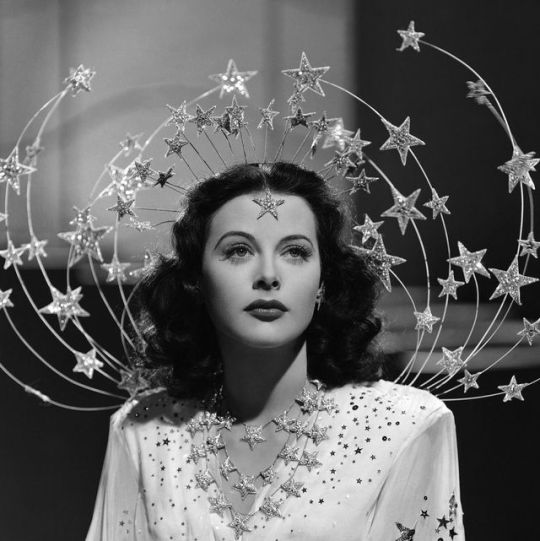
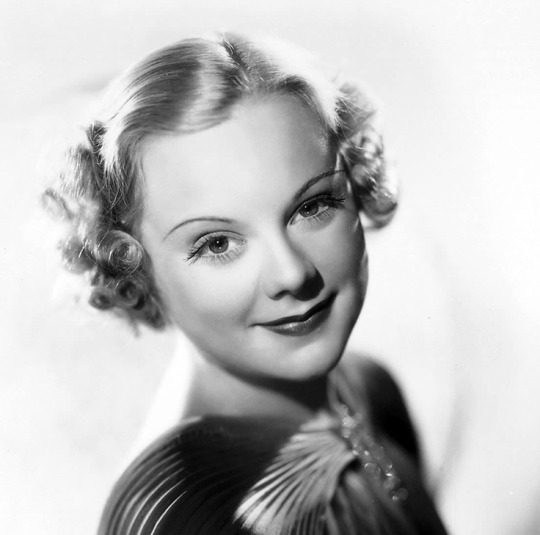
Propaganda
Hedy Lamarr (Samson and Delilah, Ziegfeld Girl)—Look. I'm sure someone has already submitted Hedy Lamarr because she was spectacularly beautiful, and a very strong lady too: she fled both an abusive marriage AND nazi persecution at a very young age and rebuilt a life for herself pursuing her love for acting all on her own!! Her career as an actress was stellar; while she began acting outside of Hollywood (her very first movie, Ecstasy, won a prize at the Venice Film Festival), she conquered American hearts very quickly with her first movie in the US, Algiers, and then just kept getting better and better. If all this isn't enough, she was also an inventor: her invention of the frequency-hopping spread spectrum radio transmission technique forms the base of bluetooth and has a lot of applications in all kinds of communication technologies. I think that deserves a prize, don't you?
Sonja Henie (Thin Ice, Happy Landing)—no idea if she counts, she's a famous skater more than anything else, but count her for the lols and i'll send you some thin mints
This is round 1 of the tournament. All other polls in this bracket can be found here. Please reblog with further support of your beloved hot sexy vintage woman.
[additional propaganda submitted under the cut]
Hedy Lamarr:
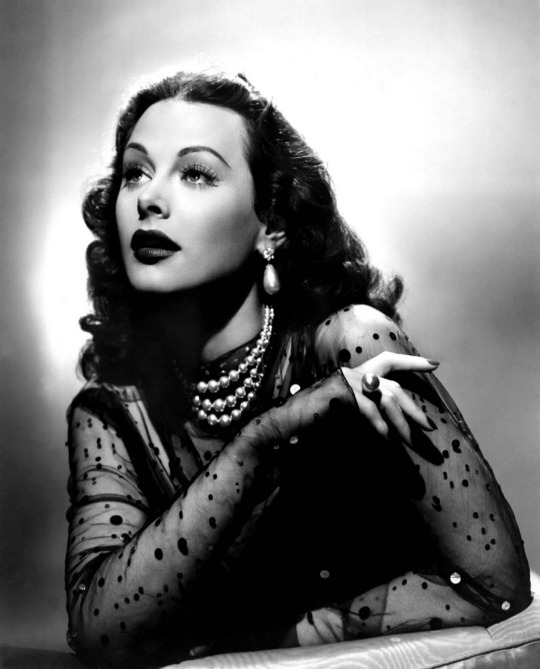
The only person you can find both on the Hollywood Walk of Fame and in the Inventor's Hall of Fame--her radio-frequency-hopping technology forms the basis for cordless phones, wi-fi, and a dozen other aspects of modern life. She was also passionate in her efforts to aid the Allies in WWII (unsurprising for a Jewish-Austrian Emigree to America), and her name served as the backbone for one of the best running jokes in what is possibly Mel Brooks' best movie. Look, Louis B. Mayer apparently believed he could plausibly promote her as "The world's most beautiful woman". Is an entire website full of people going to be less audacious than one Louis B. Mayer? I didn't think so!
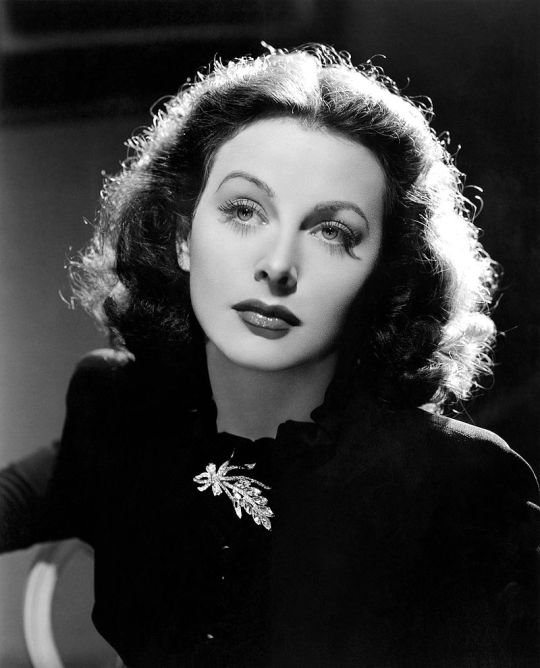
Described as "Hedy has the most incredible personal sophistication. She knows the peculiarly European art of being womanly; she knows what men want in a beautiful woman, what attracts them, and she forces herself to be these things. She has magnetism with warmth, something that neither Dietrich nor Garbo has managed to achieve" by Howard Sharpe, she managed to escape her controlling husband (and Nazi Germany) by a) Disguising as her maid and fleeing to Paris or b) Convincing the husband to let her wear all of her jewelry to a dinner, only to disappear afterwards. Also she was particularly clever and helped develop Frequency-Hopping Spread Spectrum (I can't really explain it but anyway...)
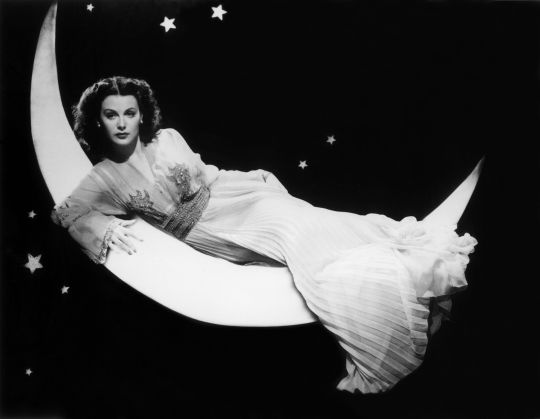
One of the most beautiful women ever in film, spoken by many critics and fans. Beautiful shapely figure, deeper seductive voice, and often played femme fatale roles. She was also brilliant and an inventor. Mainly self-taught, she invested her spare time, including on set between takes, in designing and drafting inventions, which included an improved traffic stoplight and a tablet that would dissolve in water to create a flavored carbonated drink, and much more.
Her depiction of Delilah and Samson and Delilah just lives rent free in my head. The woman was gorgeous.
Gorgeous and brilliant pioneer of modern technology and the middle part.
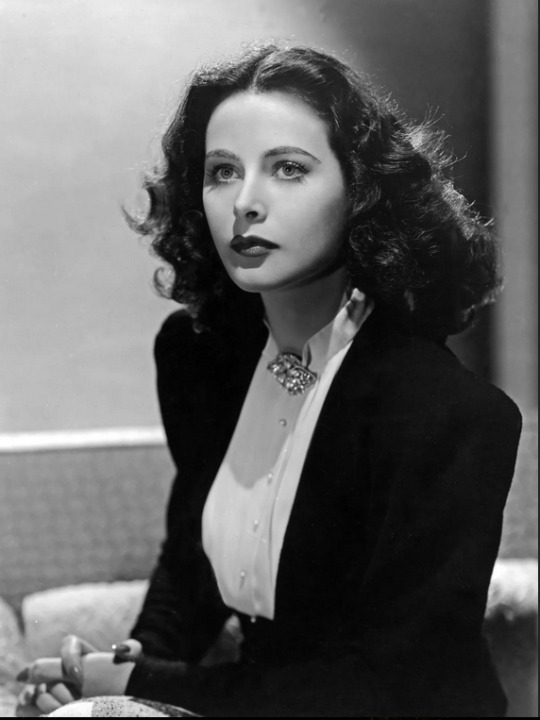
914 notes
·
View notes